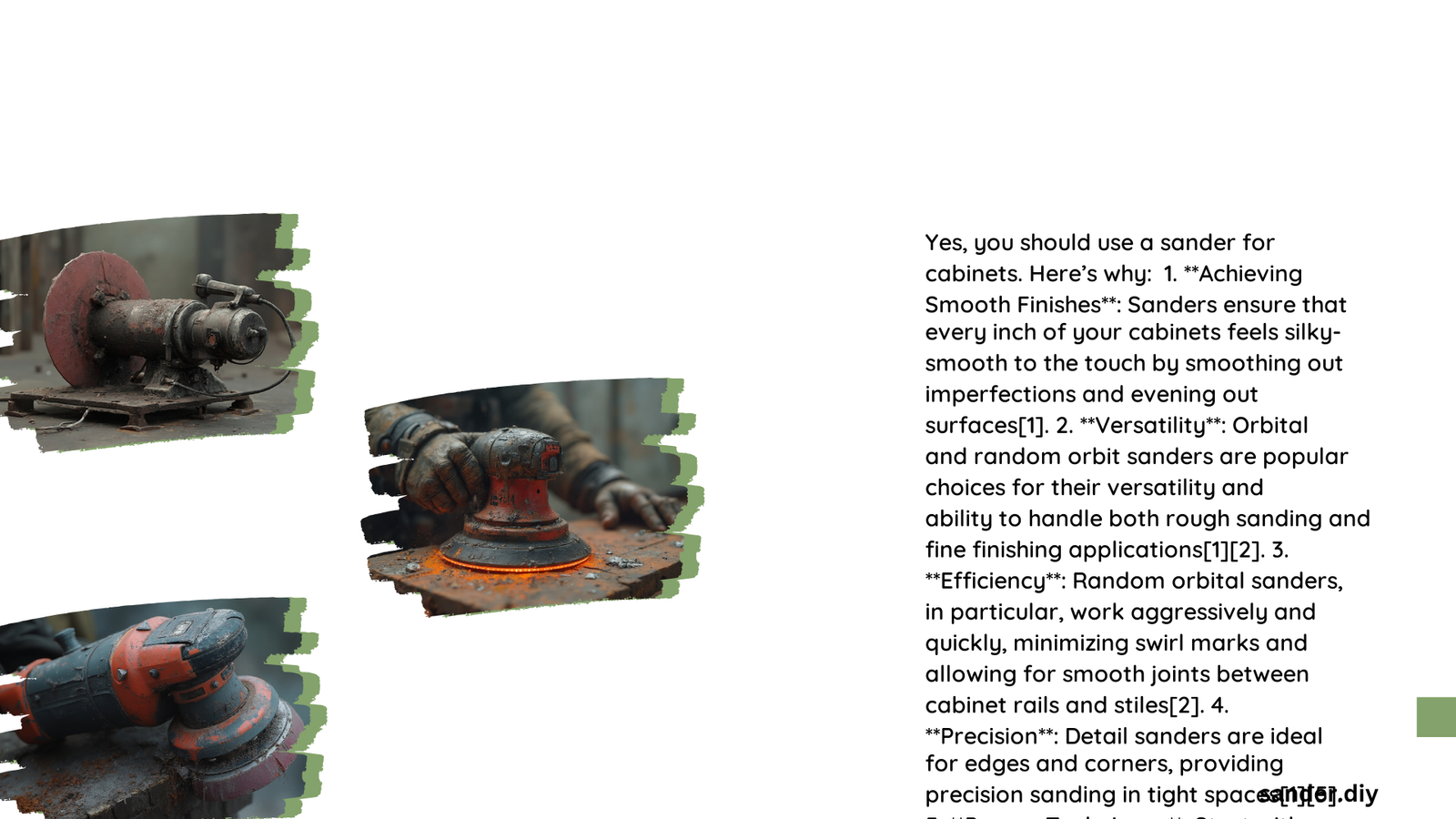When considering cabinet refinishing, the question ‘should I use a sander for cabinets’ often arises. Sanding cabinets can significantly improve the final finish by removing old paint, smoothing surfaces, and enhancing paint adhesion. However, it also comes with potential risks such as damaging delicate veneers or creating harmful dust. This guide explores the pros and cons of using sanders on cabinets, helping you make an informed decision for your project.
What Are the Advantages of Using a Sander for Cabinets?
Using a sander for cabinets offers several benefits:
- Improved Surface Preparation: Sanding effectively removes old finishes and smooths the surface.
- Enhanced Paint Adhesion: A properly sanded surface allows new paint or stain to adhere better.
- Professional Finish: Sanding helps achieve a smoother, more professional-looking result.
- Stain and Dirt Removal: It can eliminate built-up grime and stains from the cabinet surface.
What Are the Risks of Using a Sander on Cabinets?

While sanding can be beneficial, it’s not without risks:
- Veneer Damage: Aggressive sanding can wear through thin veneers.
- Health Hazards: Sanding produces fine dust particles that can be harmful if inhaled.
- Time-Consuming: Proper sanding can be a labor-intensive and time-consuming process.
How Does Cabinet Material Affect Sanding?
The type of cabinet material significantly influences the sanding approach:
| Material | Sanding Approach | Recommended Grit |
|---|---|---|
| Solid Wood | Can withstand more aggressive sanding | Start with 120-150, finish with 220-240 |
| MDF | Requires gentle sanding to avoid damage | Use 150-220 grit |
| Veneered Wood | Needs extremely careful sanding | Start with 180-220, finish with 240-320 |
What Type of Sander Should I Use for Cabinets?
The choice of sander depends on your project’s scale and the cabinet material:
- Random Orbital Sanders:
- Best for large surfaces
-
Examples: Mirka 3″ Deros 350XCV 5mm, BOSCH ROS20VSC Palm Sander
-
Palm Sanders:
- Ideal for tight spaces and detailed work
- Example: SKIL Corded Detail Sander
Is Electric Sanding Better Than Hand Sanding for Cabinets?
Both electric and hand sanding have their place in cabinet refinishing:
Electric Sanding
- Pros:
- Faster and more efficient
- Produces consistent results
- Cons:
- Can be too aggressive for delicate surfaces
- Higher initial cost
Hand Sanding
- Pros:
- More control for detailed work
- Less risk of damaging delicate surfaces
- Cons:
- Time-consuming
- May result in uneven finish if not done carefully
What Grit Sandpaper Should I Use for Cabinets?
The choice of sandpaper grit depends on the stage of your project:
- Coarse Grit (80-120): For removing old finishes or smoothing rough surfaces
- Medium Grit (150-180): For general smoothing and preparation
- Fine Grit (220-240): For final smoothing before painting or staining
Always progress from coarser to finer grits for the best results.
How Can I Minimize Dust When Sanding Cabinets?
Dust control is crucial when sanding cabinets:
- Use sanders with built-in dust collection systems
- Work in a well-ventilated area
- Wear appropriate protective gear (mask, goggles)
- Use a tack cloth between sanding stages to remove residue
What Are the Alternatives to Sanding Cabinets?
If sanding isn’t suitable for your project, consider these alternatives:
- Chemical Strippers: Can remove old finishes without sanding
- Deglosser: Chemically etches the surface to improve paint adhesion
- Chalk Paint: Some types can adhere to surfaces without sanding
Each method has its pros and cons, so research thoroughly before choosing an alternative.
By carefully considering these factors, you can determine whether using a sander for your cabinet project is the right choice. Remember to always prioritize safety and choose methods appropriate for your specific cabinet material and condition.
References:
1. https://www.cabinetrefinishingedmonton.com/what-happens-if-i-dont-sand-cabinets-before-painting/
2. https://cabinetdoor.store/blog/how-to-sand-cabinets/
3. https://finehomecontracting.com/why-you-should-never-refinish-your-cabinets/
